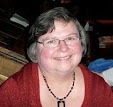 So I took a break from Fall of Giants' 985 pages to read the November selection for the Flower Memorial Library Book Club. Chris Bohjalian's Skeletons at the Feast was a quick read, but not an easy one. Taking place at the end of World War II, it is a chronicle of the horrors and atrocities of war. Bohjalian was given a diary that belonged to a friend's East Prussian grandmother, Eva Henatsch, kept from 1920 through 1945. The novel was as absorbing as it was horrific. I was thankful that there were sections that lightheartedly broke through the darkness.
So I took a break from Fall of Giants' 985 pages to read the November selection for the Flower Memorial Library Book Club. Chris Bohjalian's Skeletons at the Feast was a quick read, but not an easy one. Taking place at the end of World War II, it is a chronicle of the horrors and atrocities of war. Bohjalian was given a diary that belonged to a friend's East Prussian grandmother, Eva Henatsch, kept from 1920 through 1945. The novel was as absorbing as it was horrific. I was thankful that there were sections that lightheartedly broke through the darkness.Skeletons at the Feast is a novel with 3 concurrent story lines. Taking place as World War II is drawing to a close, men, women, and children from Prussia are streaming to the west as refugees trying to escape from the Russian army. We first meet the Emmerichs, a well-to-do family who own a beet farm. Mutti and Rolf, parents to Werner, twins Anna and Helmut, and Theo. Their home, Kaminheim, is well-appointed and comfortable. Mutti is a strong supporter of Hitler and has a portrait of him hanging in the parlor. They have received help in working the land from British POWs, one of whom, Callum Finella, has fallen in love with Anna. As the family is poised to leave their beloved home for the west, Helmut and his father join up with the German army to fight in a counteroffensive mission. Werner has already left and with no word of him in months, he is presumed to be dead. Mutti, Theo, and Anna continue on with the carts full of possessions and their horses leading them. Callum goes too, often hidden under the grain and oats.
Uri Singer is a Jew, separated from his family, as the Nazis took Jews as prisoners. He finds himself on a train to Auschwitz and realizes what will happen there, tho most of the transported prisoners have no clue. He throws himself from the train, eludes the guards and eventually assumes the identity of Manfred, a Wehrmacht officer. As time passes and he struggles to reach the west and the American and British lines, he meets with the Emmerichs and joins them in their flight. He searches for his sister Rebekah and is determined to undermine at any point the German army.
The third element of the story is the plight of French refugees, namely Cecile. Cecile is a privileged young woman who show incredible character and resilience. She and others whom she meets are moved from work camp to work camp as the fighting grows closer. Through her and her friends Leah and Jeanne we gain another insight into the atrocities that were committed in this war.
Bohjalian masterfully weaves all these stories together and creates a strong and compelling narrative. His descriptions of the march, the horrendous conditions during the winter months, and the morally corrupt Red Army are vividly portrayed. At times it is painful to read. His strong craft, tho, is his character development. Each person in this novel brings a point of view that allows the reader a glimpse at this war through many different lenses. All together they present a pictures that are disturbing and yet enlightening. The romance and true love between Callum and Anna, the acceptance of Uri (Manfred) by Mutti, her realization of what the Nazis were actually doing, and the sheer courage of all remind us that we are sometimes human beings that cannot always control what goes on around us, but we can, at least, carve some of our own personal destiny. Human beings when allowed to be just that without superficial barriers, can and will find a way to survive even in the most atrocious situations.
This was an inspirational and incredible read.


















